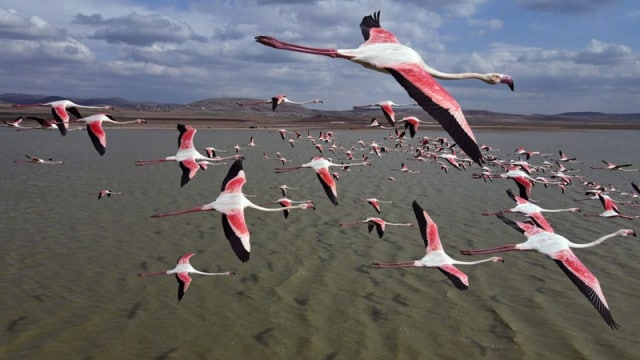About 34% of bird’s population of Europe is in Turkey
The flamingo population in Turkey makes up about 34% of the total population in Europe. The country is among the main destinations and habitats of birds, along with France and Spain.
Up to 71,000 flamingos spend the winter in Turkey each year. They are “semi-migratory” and some prefer to migrate to other Mediterranean countries, while others spend the whole year in Turkey. Flamingos usually remain in the Aegean, central Turkey and the country’s Mediterranean coasts. Some birds prefer the Black Sea and Marmara regions. Lake Tuz and the Gediz Delta in western Turkey are among the most important breeding grounds for flamingos.
The mass deaths of flamingos last year in the parched parts of Lake Tuz in central Turkey have raised concerns about the condition of birds already threatened by climate change. But bird counts and forecasts this year show flamingos are making a peaceful return to Turkey’s second-largest lake.
The census shows that 1,877 flamingos were born in Lake Tuz in 2021. Officials from the Ministry of Environment, Urban Planning and Climate Change say the flamingo population in the lake could increase with expected rainfall.
Flamingos are animals included in the program of the Ministry of Conservation of Endangered Species. Lake Tuz, one of the most important wetlands for the hatching of this bird, has been identified as a nature reserve and a place to protect the species inhabiting the place.
The lake is also home to many other birds. Mass deaths of newly hatched birds last summer due to the unusual drought scared ornithologists. Lake Ace is a haven for most newborn flamingos who learn to fly over the wetland before heading south in the fall.
Climate change is the main cause of the drought, which is affecting animals relying on massive water resources, which are now threatened with drought. Although the past winter season of precipitation and snowfall has proved favorable and revived the parched parts of the lakes, the danger still exists, according to experts, who warn that future droughts are still possible.












